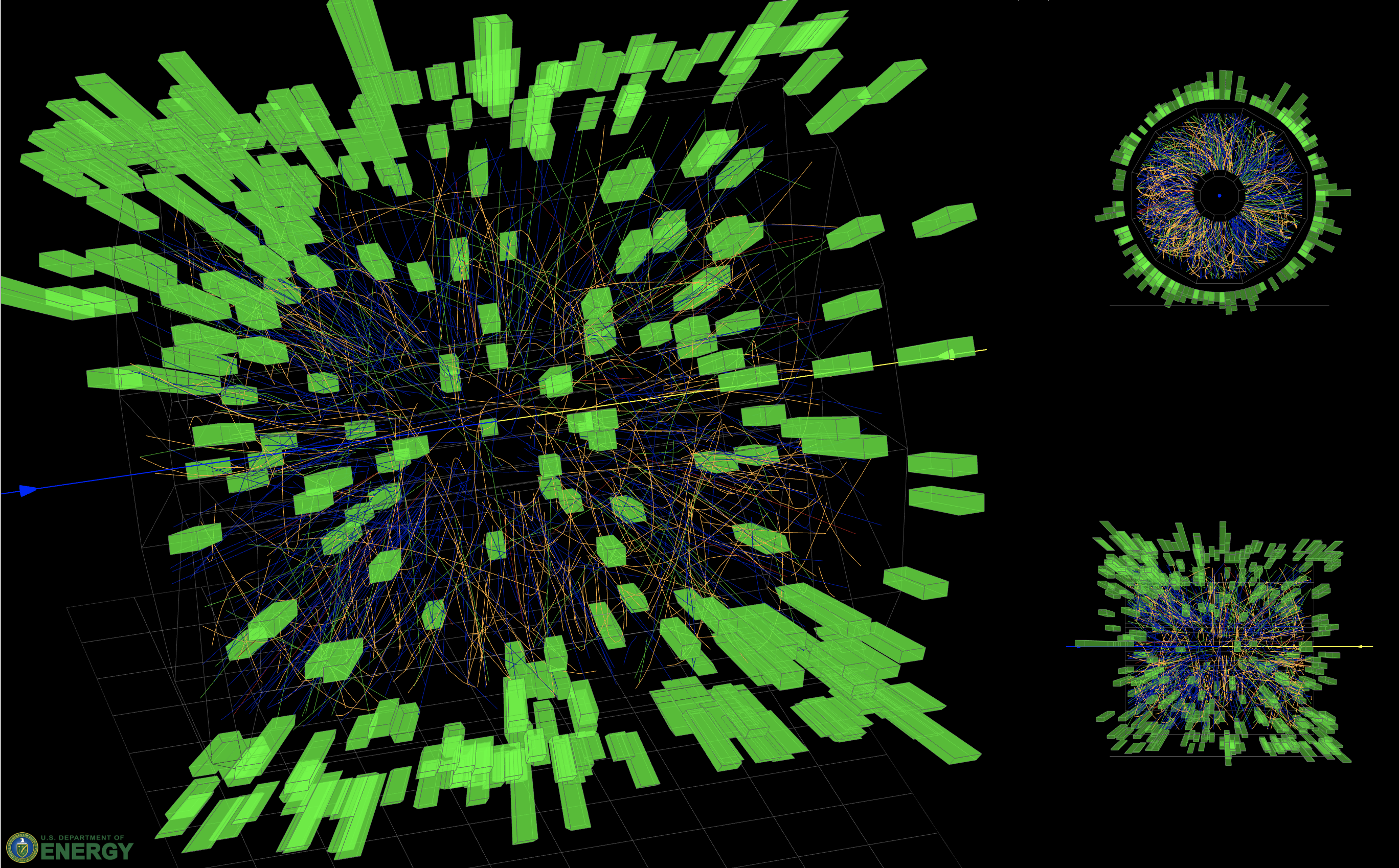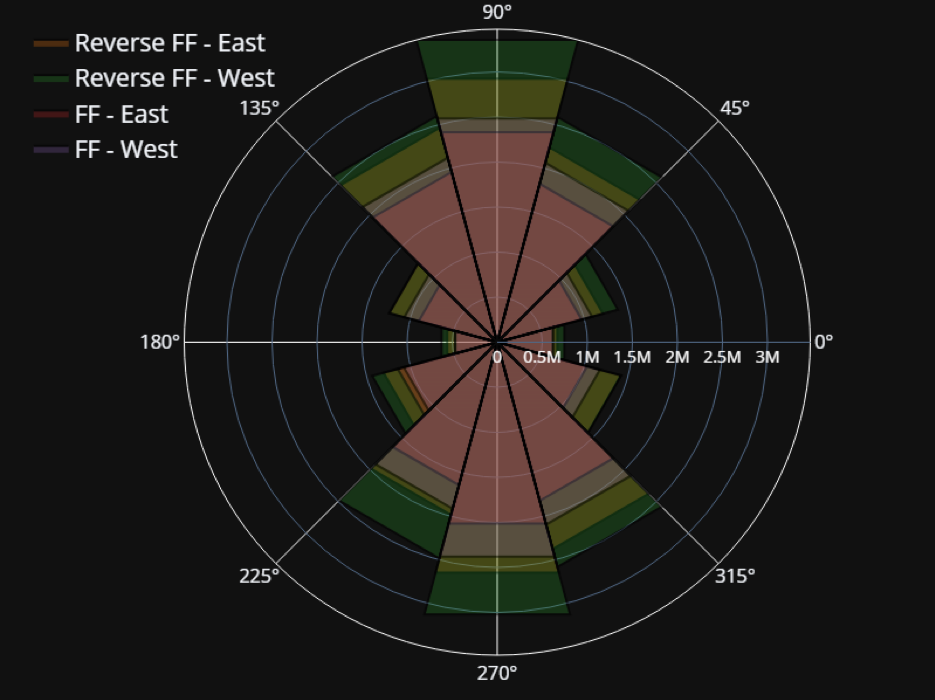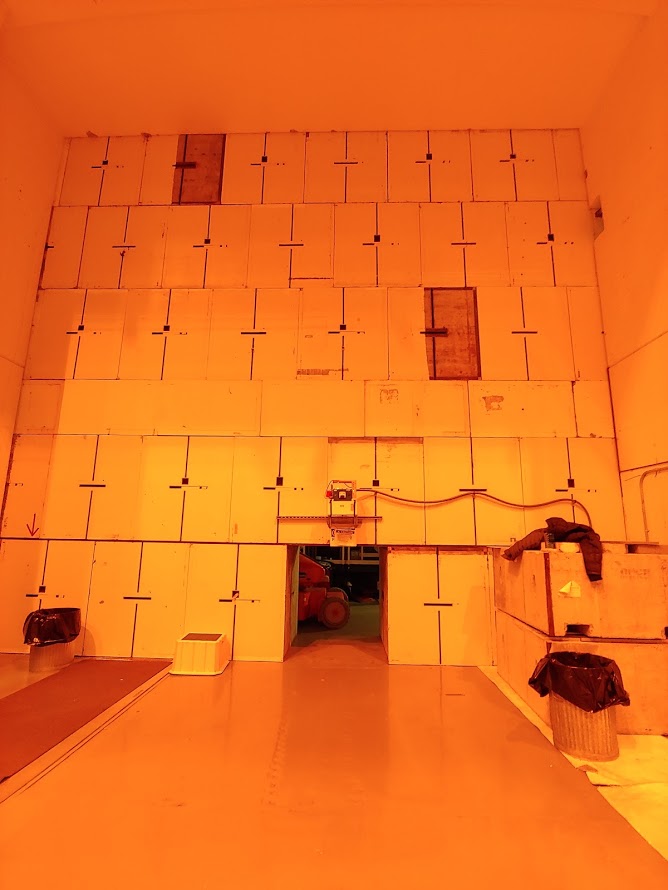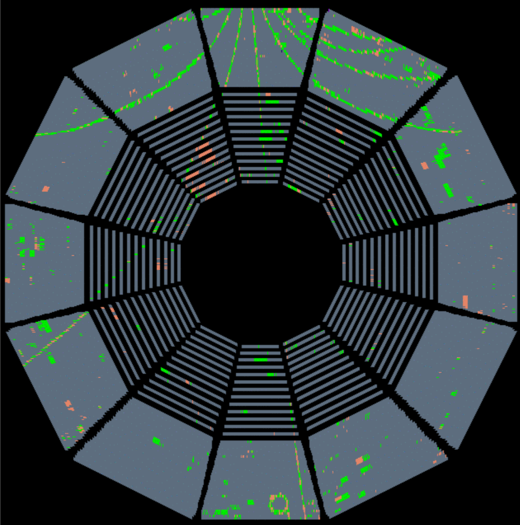February 2019
STAR Newsletter
February 2019 edition
Contents:
A note from the editor: as a collaboration-wide communication tool, this newsletter is set up to allow comments (subject to moderation against abuse), and all STAR Collaborators are welcome to do so! Please keep in mind that some content (including all comments) may be considered internal to the Collaboration and only accessible when logged into Drupal. Documentation is available here.

(Helen Caines - Co-Spokesperson)
The first few months of 2019 have been very busy out at the experimental hall as STAR, including the now fully installed iTPC and eTOF, was commissioned with cosmic rays and then the first beams of the long-awaited BES-II.
Physics running was declared at 5 a.m. on Feb 26th, and we are now taking √sNN = 19.6 GeV. We want to thank and congratulate everyone involved in constructing, maintaining, commissioning and operating STAR as we begin our 2019 Run. For those not on site a Live Event Display is available here so everyone can follow this exciting new chapter of STAR.
We never stop planning and looking forward, so, as the BES-II begins so does new construction at STAR. Prototypes are being tested at STAR for use in our 2022 forward physics program and in January an MRI proposal was submitted to the NSF requesting support for our Forward Calorimeter System upgrade. A consortium of ten institutes, led by Scott Wissink of Indiana, helped write the proposal.
The PAC meeting has been set for June 10th-11th this year, and the BUR writing committee will be formed soon. This year we have been asked to update as needed our requests the remaining BES-II running and formally propose our first forward physics pp run for 2022.
Thanks to Spiros Margetis and Aihong Tang for their work in leading the tracking task force group for the past 3+ years, and also to Ivan Kisel, who is one of the main driving forces behind CA tracker and KFParticle finder, for agreeing to take over as chairperson of this group. We also express our gratitude to Ning Yu from Xinyang Normal University (CCNU as STAR institution) for stepping up to take on the role of embedding deputy. Ning will join Derek in helping Xianglei with all our embedding requests.
Finally, we congratulate Dr. Lang He for successfully defending his Ph.D. thesis at Purdue. His thesis was titled: "Measurement of D0 directed flow and elliptic flow in Au+Au Collisions at √sNN = 200 GeV". We also wish Richard Witt good luck as he temporarily leaves USNA and STAR to join the DoE as program manager for Heavy Ions.
Looking forward to seeing you all at the collaboration meeting at BNL March 29th-April 2nd.

Number of tracks in every sector is defined, mostly, by the mother nature, and, a little bit, by the trigger setup. Click on the image to see full resolution.
(Irakli Chakaberia - Kent State Univ., iTPC Software Coordinator)
For some, they are inspiration for the comics, for others - reflections of the Valkyries’ armor, but for the STAR experiment cosmic rays are the free source of particles traversing our detector.
This year the cosmic ray data is of particularly high importance. A successful Run 2018 was followed by a lot of activities in the main hall of the STAR experiment that resulted in shining-new inner sectors of the TPC. With iTPC now fully operational, detector alignment is the first step towards the success of the BESII program. This is where cosmic rays shine in, ionizing the P10 gas across the entire STAR detector in every direction, to help us iron out every wrinkle of misalignment.
The cosmic ray run of 2019 has recently concluded and has kept the collaboration busy looking at various aspects of the detector performance. Data was collected with two opposite configurations of the full magnetic field (Full-Field [FF] and Reverse FF) with more than 80 million tracks recorded in total.
This period of detector operation has revealed some opportunities to further tune the particular systems and even uncovered the shortcomings of others, which were rectified in preparation for the RHIC collisions.
Some very violent cosmic events illuminated the updated STAR TPC during the cosmic runs. One such event is shown in the event display below (left) along with one of the very first cosmic events (right) ever seen by the STAR detector from over 20 years ago. Difference between the coverage of the inner sectors is striking and so will be the results that will come out of the upcoming Runs of the experiment. The fashion trends in high energy experimental physics have also changed during last 20 years.
To get a little more technical, the new detector brings improved dE/dx and pT resolutions and increased detector coverage. These improvements are supposed to shed more light on the thus-far-elusive critical point of the QGD phase diagram. So, stay tuned and excited, because while cosmic rays continue to traverse us all the collisions of gold ions are already seen in RHIC and will only get hotter.

Left-to-right: Angelika Drees, Gene Van Buren, and Ofer Rind. (courtesy BNL Photography)
(Gene Van Buren - BNL)
For any of you who are on Long Island who would like to attend, there will be another of BNL's PubSci public outreach events on March 7th featuring RHIC and its science. The very first PubSci event, 5 years ago this month, featured STAR's own Paul Sorenson, along with Berndt Mueller & Ágnes Mócsy. The current event will include Ofer Rind of the RACF, Angelika Drees from collider group, and me from STAR. This will actually be a repeat of the same group who tried to hold an event last November for which attendance was severely impacted by a rather unusual snow storm on Long Island. If you do attend, there are usually many casual conversations that take place among attendees immediately after the official event where you can even help be an additional voice for our science.
This is but one of many ways that STAR and its collaborators participate in public outreach, which is a critical aspect of our work. As editor of the STAR Newsletter, I would welcome hearing about and publishing articles about other efforts within the Collaboration. Along those lines, I would like to share that the planned date for this year's Summer Sunday event is August 4th, 2019. If you are new to STAR or just wish to find out more about Summer Sundays, please see one of our past summaries for 2016, 2017, or 2018.
If you miss this PubSci event and would like to hear it, an abridged podcast should become available a week or two after the event.
STAR arts
(Skipper Kagamaster - Lehigh University)
This is a feature for Collaborators to contribute something creative/artistic that relates to STAR. This could be a really cool looking graph generated from some analysis, or a striking photograph. The idea is akin to the "Back Scatter" feature of Physics Today (example), or the Picture of the Month of CERN Courier (example). Please feel free to have fun with this and consider making a contribution yourself for the next edition!

The shield wall between the STAR Assembly Hall and the Wide Angle Hall, where the experiment operates. A single block is removed for limited access before Run operations begin. The Assembly Hall lighting casts an orange glow to which human eyes typically adjust.
Previous Edition: December 2018
Groups:
- Printer-friendly version
- Login or register to post comments


